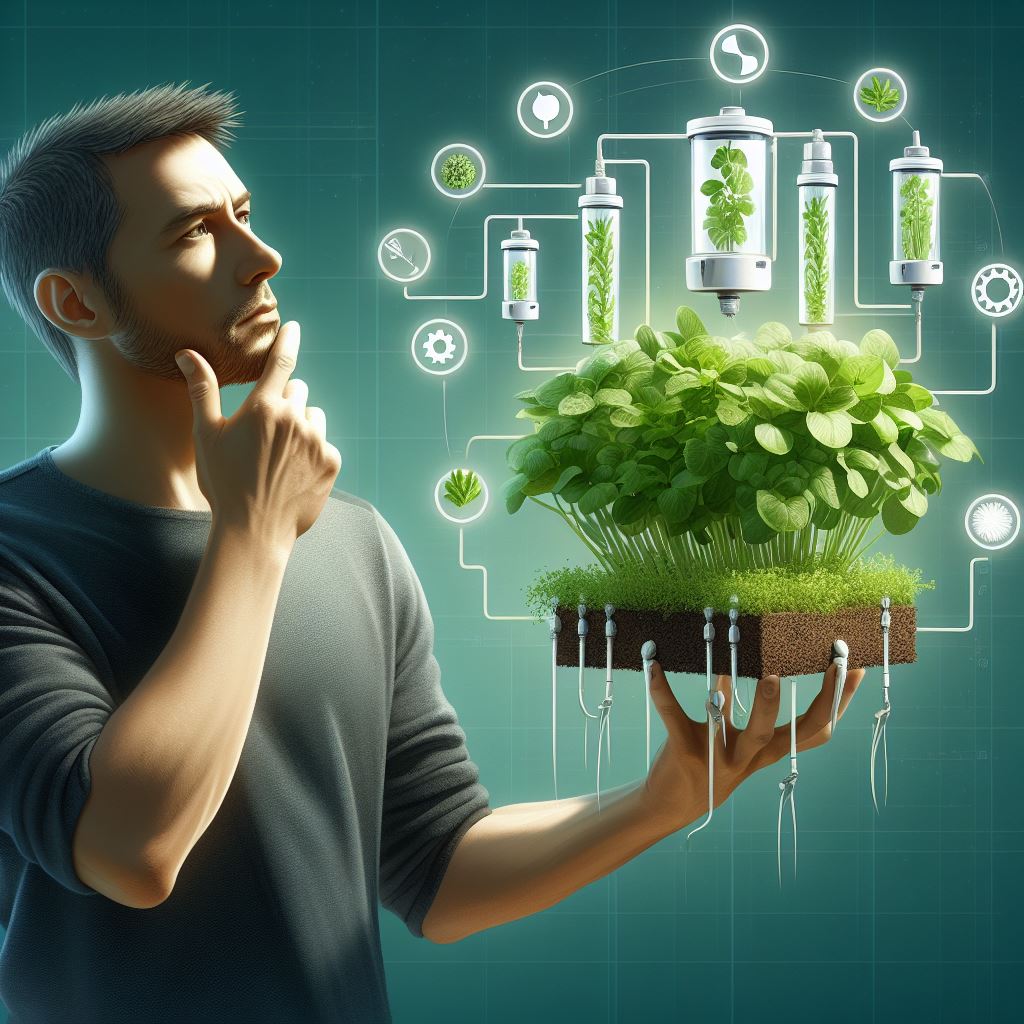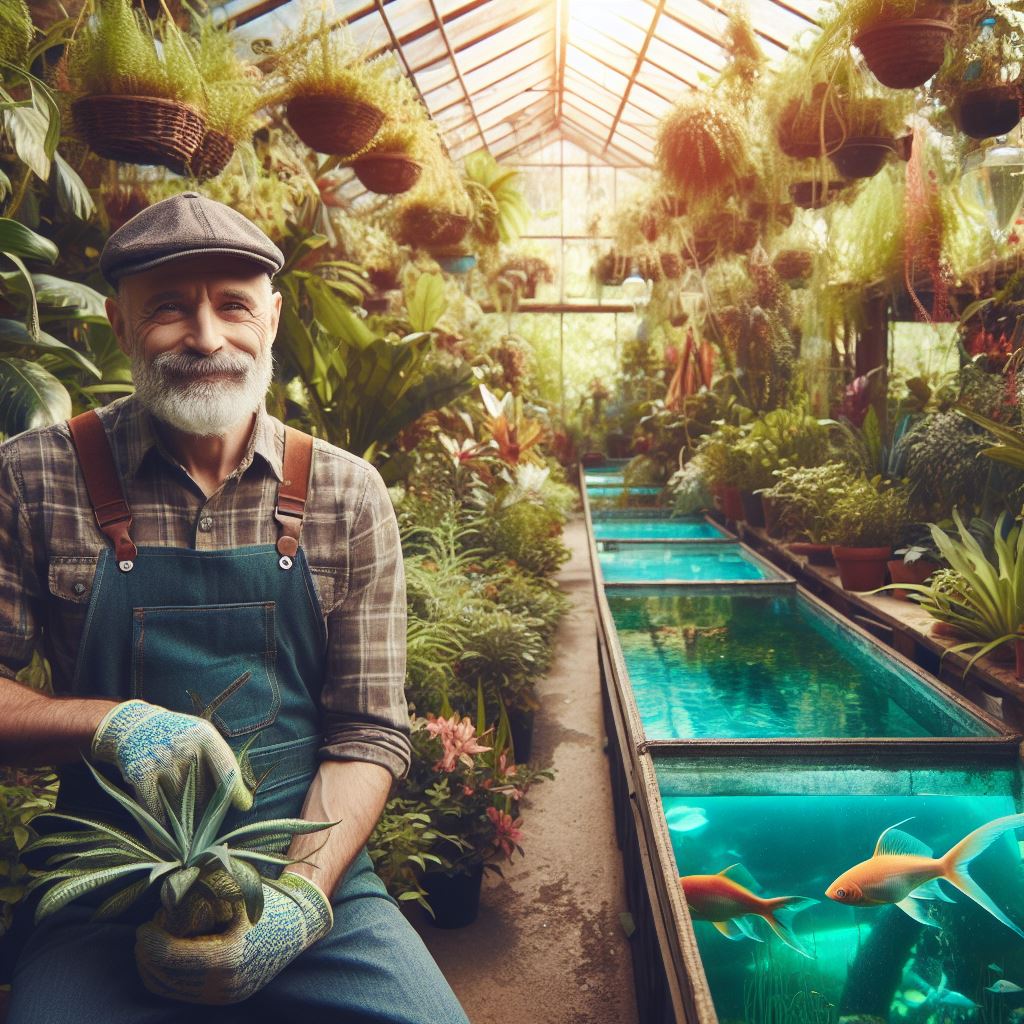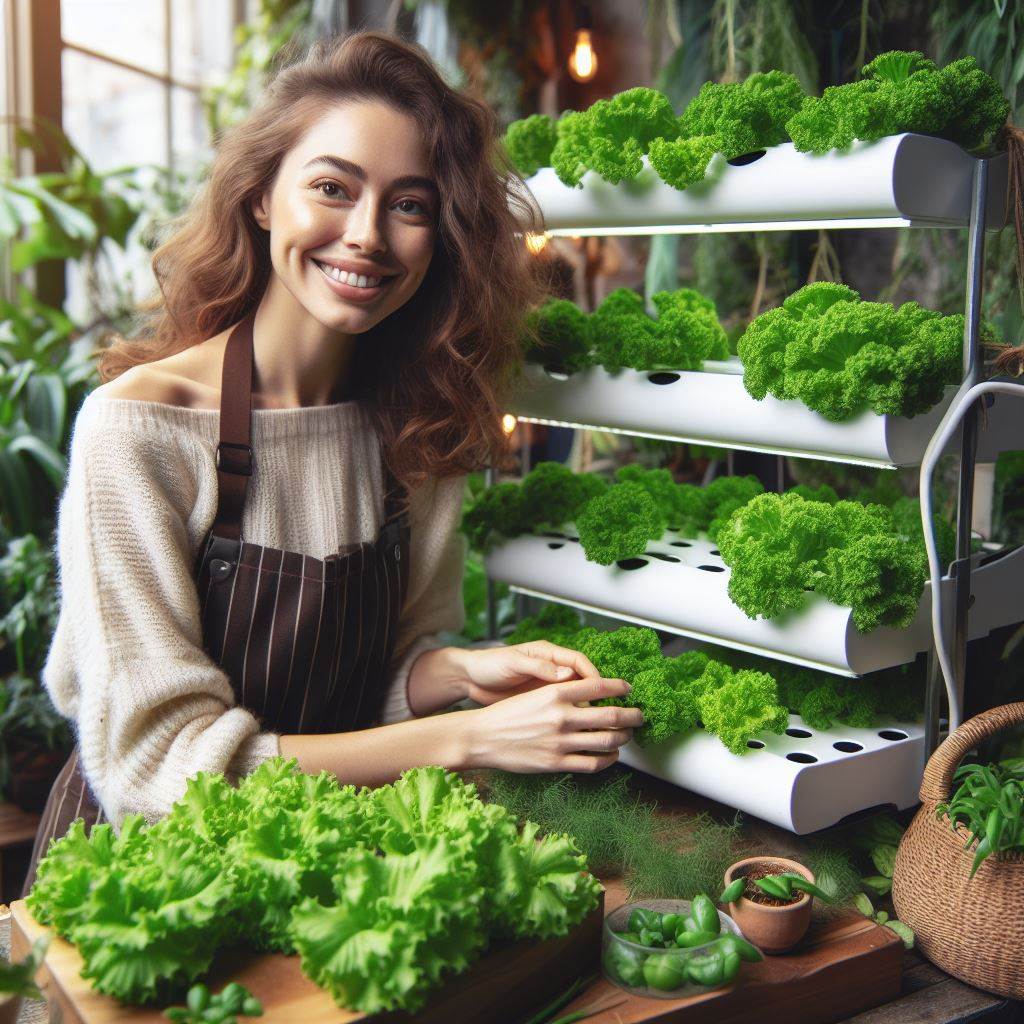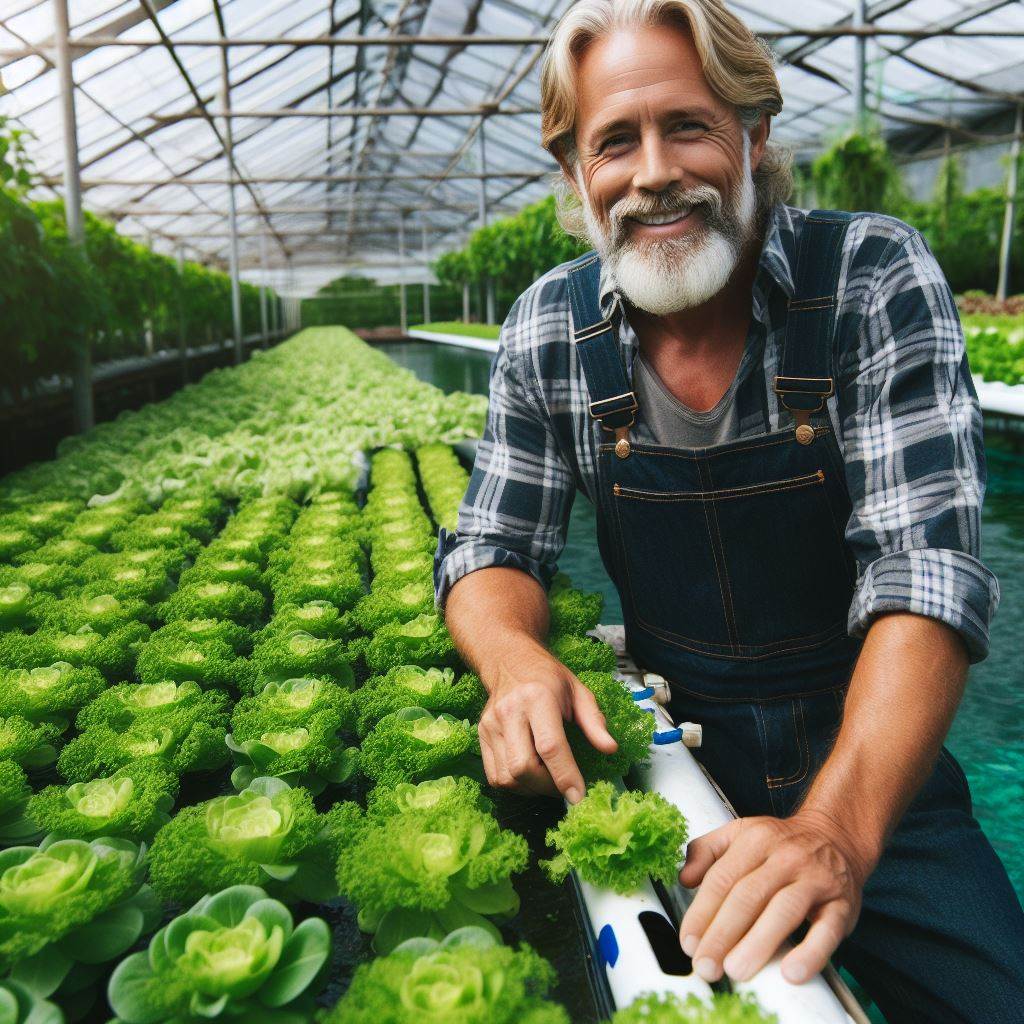Introduction
In the ever-evolving realm of agriculture, both hydroponics and soil-based farming offer distinct yet effective approaches to cultivating healthy plants.
While hydroponics utilizes a soilless environment delivering nutrients directly to roots through water, soil-based farming relies on the natural breakdown of nutrients within the soil to nourish plants.
Selecting the optimal method hinges on a nuanced understanding of several key factors, including your experience level, desired crops, available resources, and personal preferences.
A well-informed decision is crucial for establishing a thriving and sustainable gardening practice.
Throughout this blog series, we will embark on a comprehensive exploration of both hydroponics and soil-based farming.
We will delve into the strengths and limitations of each approach, equipping you with the necessary knowledge to make an informed decision tailored to your unique needs.
Stay tuned as we navigate the intricacies of yield potential, resource efficiency, maintenance requirements, and cost considerations.
By the end of this series, you will be empowered to discover the perfect fit for your specific gardening aspirations, paving the way for a flourishing and rewarding journey.
Advantages of Hydroponics
Water efficiency and conservation
Hydroponics systems are known for their exceptional water efficiency and ability to conserve this precious resource.
In traditional soil-based farming, water is often wasted due to evaporation, run-off, and deep percolation.
However, hydroponics allows for precise and targeted watering, ensuring that plants receive the exact amount of water they need without any wastage.
Water in a hydroponic system is recirculated, reducing water consumption by up to 90% compared to conventional soil farming.
The closed-loop system allows for continuous reuse, making it an environmentally friendly choice.
This efficiency not only saves water but also lowers the overall cost of irrigation, making hydroponics a sustainable option.
Faster growth and higher yields
One of the major advantages of hydroponics is the accelerated growth rate and higher crop yields it provides.
Transform Your Agribusiness
Unlock your farm's potential with expert advice tailored to your needs. Get actionable steps that drive real results.
Get StartedBy directly delivering essential nutrients to the plant roots, hydroponic systems eliminate the need for plants to search for nutrients in the soil.
Consequently, plants can focus their energy on growth and development, leading to faster and healthier vegetation.
Additionally, hydroponics allows for the fine-tuning of nutrient concentrations, optimizing plant growth.
By providing an ideal balance of nutrients, plants thrive, resulting in larger and more abundant yields.
This controlled environment also eliminates plant competition, ensuring each plant gets the required nutrients, leading to uniform growth and improved productivity.
Greater control over nutrient levels
Hydroponics grants growers the ability to have precise control over the nutrient levels in their systems.
Unlike soil-based farming, where nutrient availability can vary based on soil composition, hydroponics offers consistent and customizable nutrient solutions.
Growers can directly regulate the amount and type of nutrients provided to match the specific needs of each plant.
This level of control enables optimal plant growth in various stages, such as vegetative growth, flowering, and fruiting.
It also allows experimentation with different nutrient ratios and combinations to enhance plant health and productivity.
In the end, hydroponics provides an opportunity to fine-tune nutrient delivery, resulting in superior quality and nutritional value of the harvested crops.
Less susceptibility to pests and diseases
Traditional soil-based farming often faces challenges due to pests and diseases that can damage or destroy crops.
However, hydroponics minimizes the risk of pest infestations and diseases.
Without soil, many pests, such as root maggots or nematodes, struggle to find a suitable habitat to thrive in hydroponic systems.
Transform Your Agribusiness Online Presence
Stand out with compelling content tailored to engage your audience and drive results. From blog posts to social media, we’ll create what your business needs to grow.
Get StartedFurthermore, in hydroponics, the absence of soil-borne pathogens reduces the likelihood of diseases affecting plants.
This makes hydroponics an attractive option for organic cultivation without the need for harmful pesticides or fungicides.
Growers can focus on preventive measures and implement integrated pest management techniques to maintain a healthy and pest-free environment for their plants.
Essentially, hydroponics offers several advantages over traditional soil-based farming.
It provides water efficiency and conservation, enabling the sustainable use of this precious resource.
The faster growth and higher yields achieved through hydroponics make it a viable option for commercial production.
Greater control over nutrient levels allows for optimized plant growth and improved crop quality.
Lastly, hydroponics reduces the susceptibility to pests and diseases, promoting a healthier and more sustainable way of farming.
Read: Water Works: Basics of Home Aquaponics
Disadvantages of Hydroponics
Aquaponics undoubtedly offers numerous advantages, but it is not without its drawbacks.
In this section, we will explore some of the disadvantages associated with hydroponics.
Initial setup cost
Setting up a hydroponic system can be quite expensive, especially when compared to traditional soil-based gardening.
The cost includes purchasing equipment such as pumps, grow lights, timers, and pH regulators.
Technical knowledge and expertise required
Hydroponics involves complex systems that require a certain level of technical knowledge and expertise.
Unlock Farming Insights for Growth
Make smarter farming decisions with detailed reports on market trends, weather patterns, and soil health tailored to your farm's success. Boost productivity with actionable data.
Get ReportIt’s essential to understand the balance between water, nutrients, pH levels, and light to ensure optimal plant growth.
Reliance on artificial growth medium and nutrients
Unlike traditional soil gardening, hydroponics relies on artificial growth mediums such as clay pebbles, coco coir, or rockwool.
These mediums need to be regularly replaced and supplied with proper nutrients for healthy plant growth.
Vulnerability to power outages or system failures
One significant disadvantage of hydroponics is its vulnerability to power outages or system failures.
Without electricity, the system cannot function optimally, potentially leading to crop losses if not addressed promptly.
In general, while hydroponics offers numerous benefits, it is important to consider the disadvantages.
High initial setup costs, the need for technical knowledge, reliance on artificial growth mediums, and vulnerability to power outages or system failures are key factors to consider before opting for hydroponics.
Read: Grow More: Vertical Hydroponic Solutions
Advantages of Soil-Based Farming
In this section, we will explore the various advantages of soil-based farming over hydroponics.
Lower Initial Investment
One major advantage of soil-based farming is that it requires a lower initial investment compared to hydroponics.
Setting up a soil-based farm involves less technology and equipment, which translates to lower costs for farmers.
This makes soil-based farming a more accessible option for individuals or communities with limited financial resources.
Physical Connection with Nature
Another advantage of soil-based farming is the physical connection it offers with nature.
Working with soil allows farmers to engage in a hands-on approach, feeling the earth beneath their fingertips.
It provides a sense of grounding and satisfaction, fostering a deeper connection with the natural environment.
Natural Growth Medium and Nutrients
Soil serves as a natural growth medium, providing essential nutrients for plants.
It contains a diverse range of microorganisms that support plant growth and help in nutrient absorption.
Natural nutrients present in the soil, such as nitrogen, phosphorus, and potassium, promote healthier and more robust plant development.
Builds Soil Health and Ecosystem
Soil-based farming plays a crucial role in building soil health and maintaining a balanced ecosystem.
Continuous cultivation in soil enhances its fertility and promotes the growth of beneficial microorganisms.
This, in turn, leads to improved soil structure, better water retention, and increased nutrient availability.
Additionally, the use of organic fertilizers and compost in soil-based farming further enriches the soil and supports a thriving ecosystem.
While hydroponics offers its own set of advantages, soil-based farming holds several benefits that cannot be ignored.
The lower initial investment, physical connection with nature, natural growth medium, and soil health development make it a viable choice.
Soil-based farming not only provides nutritious produce but also contributes to the overall health of the environment.
So, whether you’re an aspiring farmer or a gardening enthusiast, consider soil-based farming for a sustainable and fulfilling experience.
Read: Urban Farming: Aquaponics in the City

Disadvantages of Soil-Based Farming
Soil-based farming has been the traditional method of agriculture for centuries, but it does come with its fair share of disadvantages.
Let’s dive into these drawbacks and explore why hydroponics might be a better option for some.
More water usage and runoff
A major drawback of soil-based farming is the excessive water usage it requires.
To ensure the plants receive sufficient moisture, farmers often need to irrigate extensively, leading to higher water consumption.
Additionally, the excess water can result in runoff, which may carry away valuable nutrients and contribute to environmental pollution.
Slower growth and lower yields
Furthermore, soil-based farming tends to have slower growth rates and lower yields compared to hydroponics.
This is because plants grown in soil take longer to reach maturity and may face more competition for nutrients.
Hydroponic systems, on the other hand, provide plants with direct access to nutrients, ensuring faster growth and higher yields.
Greater risk of pests and diseases
Pests and diseases pose another challenge in soil-based farming.
The soil environment creates an ideal habitat for various organisms, including insects and fungi, which can damage or destroy crops.
Farmers have to invest significant time and resources in pest management strategies, such as chemical pesticides, to prevent or control infestations.
In contrast, hydroponic systems are less susceptible to pest and disease outbreaks due to their controlled environment, reducing the need for harmful chemicals.
Limited control over nutrient levels
One of the key limitations of soil-based farming is the limited control over nutrient levels.
Soil composition determines the availability of essential nutrients for plants.
It can be challenging to maintain optimal nutrient levels in soil, leading to imbalances and deficiencies.
This can impact plant health and productivity.
Hydroponics, on the other hand, allows precise control over nutrient levels, ensuring plants receive the ideal balance for optimal growth.
In essence, soil-based farming has its own set of disadvantages that warrant consideration.
These include increased water usage and runoff, slower growth and lower yields, greater susceptibility to pests and diseases, and limited control over nutrient levels.
While soil-based farming continues to be the preferred choice for many, hydroponics offers a viable alternative that addresses these drawbacks.
By providing a controlled growing environment, hydroponics can yield better results and minimize the challenges faced in traditional agriculture.
Read: Aquaponics 101: Fish & Plants in Harmony
Delve into the Subject: Small-Scale Farming Tips for a Thriving Garden
Factors to Consider When Choosing
When deciding between hydroponics and soil gardening, several factors should be taken into account.
Each method has its advantages and drawbacks, and considering key factors can help you make an informed decision.
Available space and location
One crucial factor to consider is the available space and location.
If you have limited space or live in an apartment or urban area, hydroponics may be a better option.
Hydroponic systems can be set up indoors, utilizing vertical space and minimizing the need for large outdoor areas.
However, if you have access to a yard or garden, traditional soil gardening may be a viable choice.
Soil gardening allows for a more extensive range of crops and can be adapted to different soil conditions.
Additionally, soil gardening provides a more natural gardening experience, with the satisfaction of seeing plants grow in the earth.
Time and effort investment
Another factor to consider is the time and effort investment required for each method.
Hydroponics often requires more initial setup and ongoing maintenance.
You’ll need to monitor pH levels, nutrient solutions, and ensure proper aeration.
Soil gardening, on the other hand, requires regular watering, weeding, and soil conditioning.
Crop selection and market demand
Crop selection and market demand are also important considerations.
Hydroponics is well-suited for growing leafy greens, herbs, and tomatoes.
These crops have a high market demand, making hydroponics a potentially profitable choice.
On the contrary, soil gardening allows for a broader range of crops depending on the specific soil conditions and climate.
This flexibility can be advantageous if you have niche crop preferences or cater to a local market.
Personal preferences and values
Lastly, personal preferences and values should not be overlooked.
Some gardeners enjoy the tactile experience of working with soil and the connection to nature it provides.
If you find satisfaction in getting your hands dirty and appreciate the traditional aspects of gardening, soil gardening may be the best option for you.
On the other hand, if you value water conservation, space efficiency, and the ability to control growing conditions, hydroponics might align better with your preferences and values.
In a nutshell, when choosing between hydroponics and soil gardening, consider factors such as available space, time and effort investment, crop selection, and personal preferences.
Acknowledging these factors will help you make an informed decision that best suits your needs and goals as a gardener.
Conclusion
Hydroponics offers advantages such as faster growth and higher yields, but requires more maintenance and investment.
On the other hand, soil cultivation is more natural and cost-effective, but can be slower and less efficient.
It is crucial to evaluate individual needs and goals when choosing between hydroponics and soil cultivation.
Some may prefer the convenience and productivity of hydroponics, while others may value the organic and traditional approach of soil cultivation.
Additionally, it is worth considering exploring alternative methods, such as aquaponics or aeroponics, which combine the benefits of both systems.
Hybrid methods that incorporate elements of both hydroponics and soil cultivation can also be a viable option.
Ultimately, the best choice depends on factors such as available space, resources, time commitment, and personal preference.
By weighing the advantages and disadvantages, evaluating individual needs and goals, and considering alternative methods, individuals can make an informed decision about whether to choose hydroponics, soil cultivation, or a combination of both.




